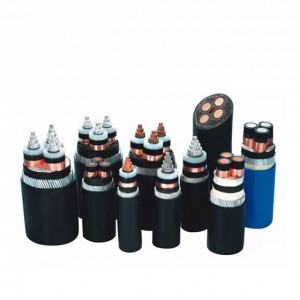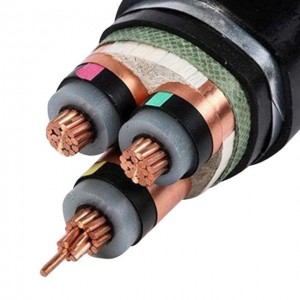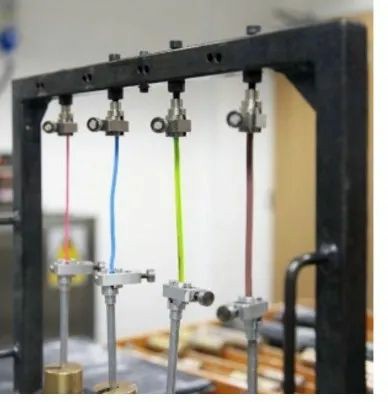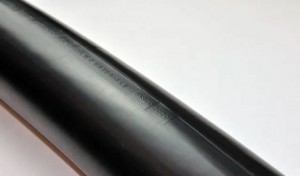Medium voltage cables have a voltage range between 6 kV and 33kV. They are mostly produced as part of power generation and distribution networks for many applications such as utilities, petrochemical, transportation, wastewater treatment, food processing, commercial and industrial markets.
In general, they are mainly used in systems with a voltage range up to 36kV and play an integral role in power generation and distribution networks.
01.Standard
With the growing global demand for medium voltage cables, conformance to industry standards is becoming more and more important.
The most important criteria for medium voltage cables are:
- IEC 60502-2: The most commonly used medium-voltage cables in the world, with a rated voltage up to 36 kV, a wider range of design and testing, including single-core cables and multi-core cables; armored cables and unarmored cables, two types The armor “belt and wire armor” is included.
- IEC/EN 60754: designed to assess the content of halogen acid gases, and aims to determine the acid gases released when insulation, sheathing, etc. materials are on fire.
- IEC/EN 60332: Measurement of flame propagation throughout the cable length in the event of a fire.
- IEC/EN 61034: specifies the test for determining the smoke density of burning cables under specified conditions.
- BS 6622: Covers cables for rated voltages up to 36 kV. It covers the scope of design and testing, including single core and multi core cables; armored only cables, wire armored types only and PVC sheathed cables.
- BS 7835: Covers cables for rated voltages up to 36 kV. It covers the scope of design and testing, including single-core, multi-core cables, armored cables only, armored only, low-smoke halogen-free cables.
- BS 7870: is a series of very important standards for low and medium voltage polymer insulated cables for use by power generation and distribution companies.
02.Structure and material
Medium voltage cable designs can come in different sizes and types. The structure is much more complicated than that of low-voltage cables.
The difference between medium voltage cables and low voltage cables is not only how the cables are constructed, but also from the manufacturing process and raw materials.
In medium voltage cables, the insulation process is quite different from that of low voltage cables, in fact:
- The medium voltage cable consists of three layers instead of one layer: conductor shielding layer, insulating material, insulating shielding layer.
- The insulation process for medium voltages is achieved by using CCV lines instead of conventional horizontal extruders, as is the case for low voltage cables.
- Even if the insulation has the same designation as the low voltage cable (e.g. XLPE), the raw material itself is different to ensure a purer insulation. Color masterbatches for low-voltage cables are not permitted for core identification.
- Metallic screens are commonly used in the construction of medium voltage cables for low voltage cables dedicated to specific applications.
03.Test
Medium voltage cable products require in-depth type tests to evaluate individual components and the entire cable according to all approval standards for cable products. Medium voltage cables are tested for their electrical, mechanical, material, chemical and fire protection functions.
Electric
Partial Discharge Test – Designed to determine the presence, magnitude, and check if the magnitude of a discharge exceeds a specified value for a specific voltage.
Thermal Cycling Test – Designed to evaluate how a cable product responds to constant temperature changes in service.
Impulse Voltage Test – designed to evaluate whether a cable product can withstand the surge of a lightning strike.
Voltage Test 4 Hours – Follow the sequence of tests above to confirm the electrical integrity of the cable.
Mechanical
Shrinkage testing – designed to gain insight into material performance, or effects on other components in the cable construction.
Abrasion Test – Mild steel horns are force loaded as standard and then dragged horizontally along the cable in two opposite ways to a distance of 600mm.
Heat Set Test – Designed to assess whether there is sufficient crosslinking in the material.
Chemical
Corrosive and Acid Gases – Designed to measure gases released as cable samples burn, simulate fire scenarios, and evaluate all non-metallic components.
The fire
Flame Spread Test – Designed to evaluate and understand cable performance by measuring the spread of flame through the length of the cable.
Smoke Emission Test – Designed to ensure that the smoke produced does not result in lower light transmission levels than the specified relevant values.
04.Common malfunctions
Poor quality cables increase failure rates and put the end user’s power supply at risk.
The main reasons for this are premature aging of the cable infrastructure, poor quality foundation of joints or cable termination systems, resulting in reduced reliability or operational efficiency.
For example, the release of partial discharge energy is a precursor to failure, as it provides evidence that the cable is beginning to deteriorate, which will lead to failure and failure, followed by a power outage.
Cable aging typically begins by affecting cable insulation by reducing electrical resistance, which is a key indicator of defects including moisture or air pockets, water trees, electrical trees, and other problems. In addition, split sheaths can be affected by aging, increasing the risk of reaction or corrosion, which can cause problems later in service.
Selecting a high-quality cable that has been thoroughly tested extends its life, predicts maintenance or replacement intervals, and avoids unnecessary interruptions.
05.Type testing and product approval
Form testing is useful because it confirms that a particular sample of cable complies with a particular standard at a given moment.
BASEC product approval includes stricter departmental monitoring through regular audits of production processes, management systems and rigorous cable sample testing.
In a product approval scheme, multiple samples are tested depending on the cable or range being evaluated.
The very stringent BASEC certification process assures the end user that the cables are manufactured to accepted industry standards, are manufactured to the highest quality level and are in continuous operation, significantly reducing the risk of failure.
Email: sales@zhongweicables.com
Mobile/Whatspp/Wechat: +86 17758694970
Post time: Jul-26-2023









